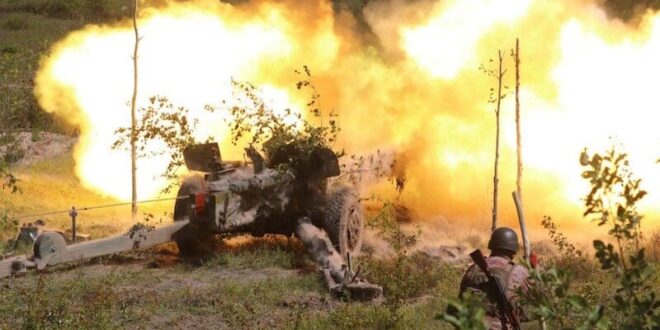- Ukrainian Drones Strike Chechnya
On October 29 Ukrainian combat drones attacked the Russian Special Forces University in the Russian Republic of Chechnya. The university, founded in 2013 and named after Russian President Vladimir Putin, is a private center for modern warfare training. The institution has close ties with current and retired members of Russia’s National Guard (Rosgvardiya). Most of its instructors hail from the ranks of the Rosgvardiya or from the Alpha counterterrorism unit of Russia’s Federal Security Service (FSB).
Pro-Putin Chechen strongman Ramzan Kadyrov’s militia, dubbed the Kadyrovites, also has strong ties to the university. Since Russia’s invasion of Ukraine, the institution has trained so-called volunteers before they are sent to the front lines. Kadyrov does not hide the fact that tens of thousands of fighters received training at the university before being sent to occupied Ukraine. Worse, Ukrainian sources report that Russian forces have sent children abducted from occupied parts of Ukraine to the university, where the abductees are trained to serve as child soldiers against their own country.
As Kadyrov, Putin’s loyal ally, doubles down on his forces’ involvement in Russia’s war, Ukraine will likely continue to target Chechnya under the pro-Russian rule, while anti-Kremlin Chechen forces continue to operate alongside Ukrainian combat formations.
- North Korean Troops Move Closer to the Ukrainian Front
According to the United States Department of Defense, North Korean troops have moved to the front lines in Ukraine to prepare to enter combat operations there within weeks. Mark Rutte, the secretary general of the North Atlantic Treaty Organization (NATO), seconded the Pentagon’s assessment, claiming that Pyongyang has already fielded military formations to fight the Ukrainian Armed Forces in the Russian region of Kursk.
The White House also confirmed that since mid-October, North Korea has dispatched at least 3,000 servicemen to fight the Kremlin’s war. These troops traveled by sea from Wonsan, North Korea, to Vladivostok, and then dispersed to different training bases in eastern Russia. Additionally, South Korean sources have reported that a 10,000-strong contingent of troops is preparing to serve in Russia later this year. The Kremlin will reportedly pay $2,000 to each North Korean serviceman taking part in combat operations, revenue that will undoubtedly fill the coffers of a Kim Jong Un dictatorship that considers its soldiers to be lucrative export items.
Additionally, Pyongyang’s 11th Corps special forces unit, also known as the Storm Corps, has reportedly forward-deployed troops to Ukraine. Available writings suggest that while the North Korean military’s conventional formations are often poorly equipped, the country’s special forces are highly motivated and well-trained. Formerly known as the Light Infantry Training Guidance Bureau, the Storm Corps specializes in unconventional warfare, infiltrations, and sabotage. Official reports have concluded that, of North Korea’s 200,000 special forces personnel, around 60,000 fall under the command of the Storm Corps. This will enable Pyongyang to easily rotate combat formations and supply reinforcements to the highly attritional battleground in Ukraine.
- Battlefield Assessment
Ukraine’s positions continue to deteriorate across the front lines. Russia has secured substantial territory throughout October. The Russian military has also committed a mounting number of war crimes, including executions of Ukrainian prisoners of war.
Pinned down on multiple fronts, Ukraine is gearing up to mobilize tens of thousands of citizens to improve the unfavorable force-to-terrain and force-on-force ratios it currently faces. According to the Ukrainian General Staff, Ukraine’s positions in Kupiansk, Pokrovsk, and Kurakhove remain tenuous.
In Kharkiv Oblast, the Russian military has kept up its push for Vovchansk. Clashes are also unfolding for Toretsk, and Ukrainian defensive combat operations have managed to hold the line in Siversk. In Chasiv Yar, the Russian offensive gained more territory and reached the canal on the southern edge of the town.
Around the city of Selydove, the Russian military is progressing further into Ukrainian territory. And across the country, including in Kyiv, Russia’s heightened use of Iranian Shahed drones poses a significant threat to Ukrainian troops and civilians.
In Kursk, Ukraine faces additional challenges in its efforts to hold Russian territory. With Pyongyang’s forces likely to enter the fray, Kyiv’s need for permission to use Western long-range weapons inside Russia grows even stronger. Weapons like the Army Tactical Missile System (ATACMS) could hit North Korean combat formations at their assembly sites elsewhere in Russia before they are able to affect the tactical situation in Kursk.
 Eurasia Press & News
Eurasia Press & News


